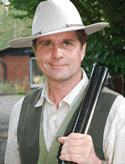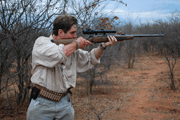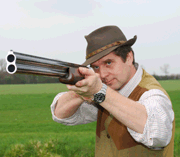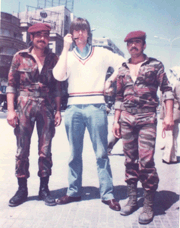Fausti Warwick 12 bore

I tested the Fausti Warwick 20 bore some while back and was quite impressed with it, not least because the Sportsman Gun Centre were offering the gun at a very reasonable £975. Regardless of its price, it handled and shot well. I also quite liked the scroll engraving on a plain sided action – I usually prefer non-game scene engraving on less expensive guns (though I will forgive the Warwick its single, and well executed, golden grouse on the action belly). This month I am looking at the 12 bore sporter version of the Warwick – built on an a larger action, of course, and also supplied by the Sportsman. First impressions are pretty good. This isn’t a Purdey, but it looks attractive and is presented nicely - particularly considering the price.
One has to judge a gun at its price point, and, that is what I intend to do here. The Fausti Warwick 12 bore, like its 20 bore near sibling, is, indeed, a typical product of recent Italian mass production. It is an attractive, gun, at a more than fair price. Because of the high-tech revolution, it is probably a better gun than the budget buys of a generation ago. The mechanics and wood work are not only well presented and consistently machined; the design itself and the form of the weapon are well evolved. It is a good weight for a competition gun and comes to face and shoulder well with its fairly tight radiused pistol grip and nicely proportioned rounded forend.
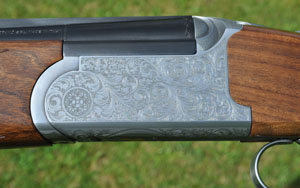
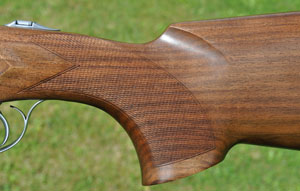
My preference is for a slightly more open radius grip on a game gun, but this one filled the hand well and felt comfortable. The field style forend, meantime, always gets my vote over a Schnabel because it does not restrict front hand position. This one was especially good and might stand for a pattern to those makers considering what they might put on a gun for the British market. I note Beretta have been using this style much more recently.
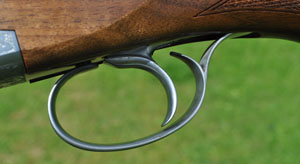 The Warwick is built on action of similar design that is mechanically almost identical to the 20 bore recently tested. It is, however, larger, and also notable for its extra locking system – Fausti call it quad-lock. This is a simplified version of the sort of thing one sees in Boss guns and copies or partial copies such as the Perazzi, Kemen and Gamba (which all have Boss-type ‘draws and wedges’ as well as conventional bolting at the standing breech). In the Fausti, there are, however, slots cut into the walls of the monobloc that mate with fairly wide, but flat, round studs on the inner action walls as the gun is closed.
The Warwick is built on action of similar design that is mechanically almost identical to the 20 bore recently tested. It is, however, larger, and also notable for its extra locking system – Fausti call it quad-lock. This is a simplified version of the sort of thing one sees in Boss guns and copies or partial copies such as the Perazzi, Kemen and Gamba (which all have Boss-type ‘draws and wedges’ as well as conventional bolting at the standing breech). In the Fausti, there are, however, slots cut into the walls of the monobloc that mate with fairly wide, but flat, round studs on the inner action walls as the gun is closed.
The intention is the same as in the generic Boss style guns – to increase strength when the gun is locked up. It also makes the Fausti stand out from the many other Gardonne products which use a similar action without this extra feature (as we have often noted here, the most common plan is to combine stud pin hinging and bifurcated lumps with Boss style bolting - though the more expensive guns - often adopt Boss style bolting to the rear as well).
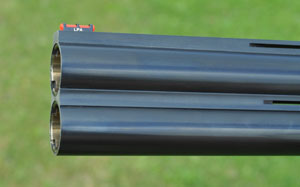 The rest of the specification is conventional. The 30" barrels of the Warwick (there is a 28" option too) are monobloc. What else today? The rib is a simple 10mm parallel design. There is no ramp, and it is a good, plain design, the same width front and rear. Apart for an 11-7 taper the 10mm parallel is one of my favourites for sporting work. The top is neatly machined to create a non-reflective surface. It is well laid and true and presents an excellent, uncluttered, picture to the eye. The sighting bead is a small red translucent rod set in a steel carrier – my preference is usually for a simple metal bead, but this does the job and is not too dominant to the eye. The joining ribs are ventilated, and the Fausti is stamped with Italian proof marks for 3" (76mm) cartridges. The bores, both quite tight at 18.3 in diameter, but well presented with competent blacking and good monobloc joints. The ejector work, though simple, also inspires confidence too. The Warwick has five multi chokes supplied - of concealed pattern.
The rest of the specification is conventional. The 30" barrels of the Warwick (there is a 28" option too) are monobloc. What else today? The rib is a simple 10mm parallel design. There is no ramp, and it is a good, plain design, the same width front and rear. Apart for an 11-7 taper the 10mm parallel is one of my favourites for sporting work. The top is neatly machined to create a non-reflective surface. It is well laid and true and presents an excellent, uncluttered, picture to the eye. The sighting bead is a small red translucent rod set in a steel carrier – my preference is usually for a simple metal bead, but this does the job and is not too dominant to the eye. The joining ribs are ventilated, and the Fausti is stamped with Italian proof marks for 3" (76mm) cartridges. The bores, both quite tight at 18.3 in diameter, but well presented with competent blacking and good monobloc joints. The ejector work, though simple, also inspires confidence too. The Warwick has five multi chokes supplied - of concealed pattern.
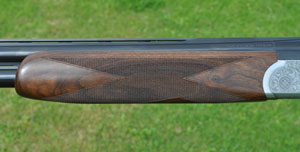 The action style is familiar save for the extra locks. Inspired by Boss, Woodward, Beretta and Perazzi, there is no full width hinge pin (so, in this respect the gun copies the Woodward rather than the Boss plan - amazing what those London makers dreamt up 100 years ago), instead stud pins are mounted in the action walls near the knuckle. There is a full width bolt which engages with a bite beneath the bottom chamber mouth in the Browning manner (and, as noted, adopted by many other makers). All machining is competent and the design fundamentally sound and well proven.
The action style is familiar save for the extra locks. Inspired by Boss, Woodward, Beretta and Perazzi, there is no full width hinge pin (so, in this respect the gun copies the Woodward rather than the Boss plan - amazing what those London makers dreamt up 100 years ago), instead stud pins are mounted in the action walls near the knuckle. There is a full width bolt which engages with a bite beneath the bottom chamber mouth in the Browning manner (and, as noted, adopted by many other makers). All machining is competent and the design fundamentally sound and well proven.
The perforated top lever (a decorative touch that will appeal to some) and the combined safety and barrel selector functioned well. The trigger pulls were ok and the smoothed form of the trigger blade good. The decoration of the action consisted of medium scroll work that pleased by eye. It was laid on flat action walls, which, although simple, were also to my taste. Flat action panels reduce production costs, but they work well here especially when combined with attractive, nicely executed, engraving. It was not too bold, but bold enough to make the gun distinctive.
The stock wood on the test gun was quite plainly figured – what can you expect at this price? It was, however, well presented generally. Wood to metal fit was not quite perfect at the head of the stock, but the chequering, no doubt laser cut, was excellent and laid out in traditional panels as I much prefer. Stock dimensions were good too. The length of pull was the modern sporting norm at 14 3/4." 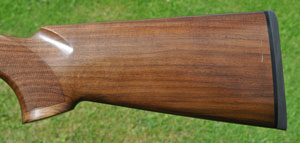 The butt was finished off with a simple, black 'rubber' solid pad. Drop dimensions were spot on good at 1 3/8" at comb and 2 1/8" at heel respectively and there was a little right-hand castoff. The form of the stock and forend were fine, as noted. I found the gun comfortable to mount with an ergonomically efficient grip shape, a comfortable comb and an excellent forend design.
The butt was finished off with a simple, black 'rubber' solid pad. Drop dimensions were spot on good at 1 3/8" at comb and 2 1/8" at heel respectively and there was a little right-hand castoff. The form of the stock and forend were fine, as noted. I found the gun comfortable to mount with an ergonomically efficient grip shape, a comfortable comb and an excellent forend design.
Shooting Impressions
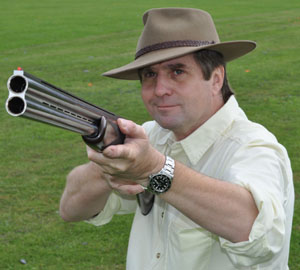 Although this gun carries a very reasonable price tag, it shot surprisingly well. I thought the stock shapes were good and they promoted good control. Weighing in at 8lbs 3oz (spot for a 30" sporter - the 28" version is 2 oz. less) I found that I had no difficulty connecting with the birds consistently (clay ones at the well-appointed Southern Counties - a ground with one of the best restaurants in the country as well as massive, modern, gun shop), though, I confess to not shooting the gun quite as much as I would have liked as I was off to Africa the following day on safari and .458s and .300s were looming on my mind. This Fausti, nevertheless, offered sound design, good style, and excellent value for money. I doubt if they will hang around long at the special offer price.
Although this gun carries a very reasonable price tag, it shot surprisingly well. I thought the stock shapes were good and they promoted good control. Weighing in at 8lbs 3oz (spot for a 30" sporter - the 28" version is 2 oz. less) I found that I had no difficulty connecting with the birds consistently (clay ones at the well-appointed Southern Counties - a ground with one of the best restaurants in the country as well as massive, modern, gun shop), though, I confess to not shooting the gun quite as much as I would have liked as I was off to Africa the following day on safari and .458s and .300s were looming on my mind. This Fausti, nevertheless, offered sound design, good style, and excellent value for money. I doubt if they will hang around long at the special offer price.
I might also note, before concluding, that Fausti are capable of making more refined sporting shotguns. I have been to the factory several times, and the Fausti sisters are friends of mine as you can see from the film we made.
The firm combines traditional and high-tech methods of gun-making and produces guns at all price points. When you visit it, you cannot help but be impressed by the energy of the Fausti sisters and their production team and the huge range of guns they still make. They are particularly proud of their bespoke and custom work – which we rarely see in the UK – I hope to show you some of it in the future.
See a Video of the Fausti Factory here
My thanks to Lyalvale (Express) for supplying the cartridges used in this test, the Sportsman Gun Centre, and to Elena, Giovanna and Barbara Fausti.
Tech Spec
Make: Fausti
Model: Warwick
Bore: 12 (20 bore options)
Chamber: 3” (76mm)
Barrel: 30" (28" option)
Rib: 10mm parallel
Weight: 8lbs. 3oz. (28" gun 8lbs. 1oz.)
RRP: £975


